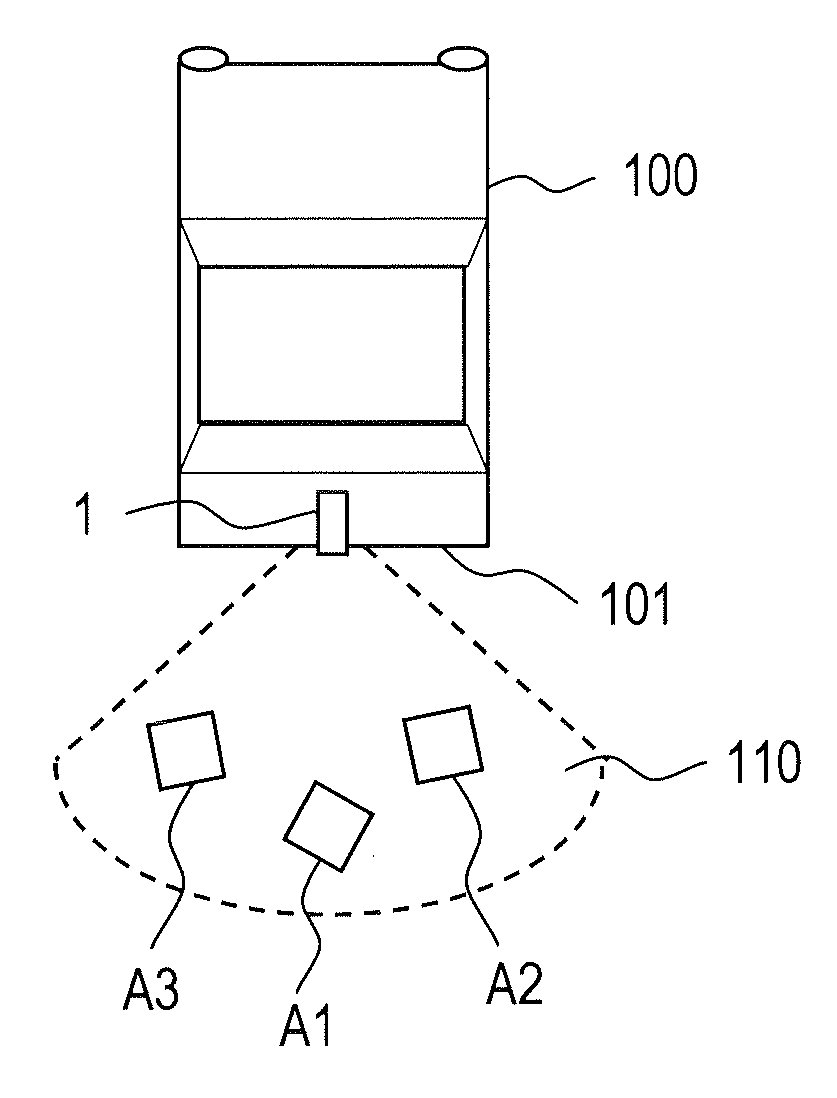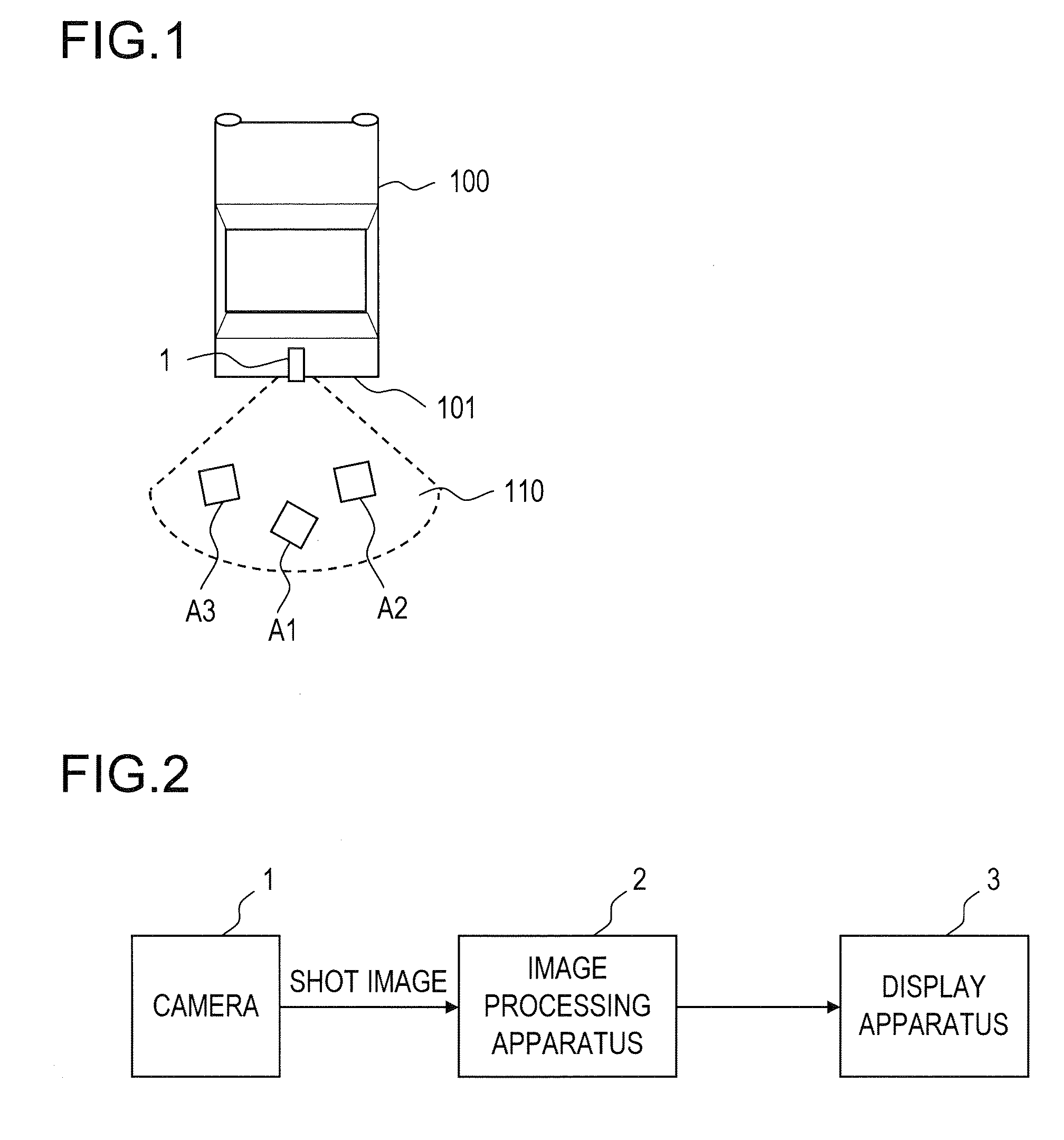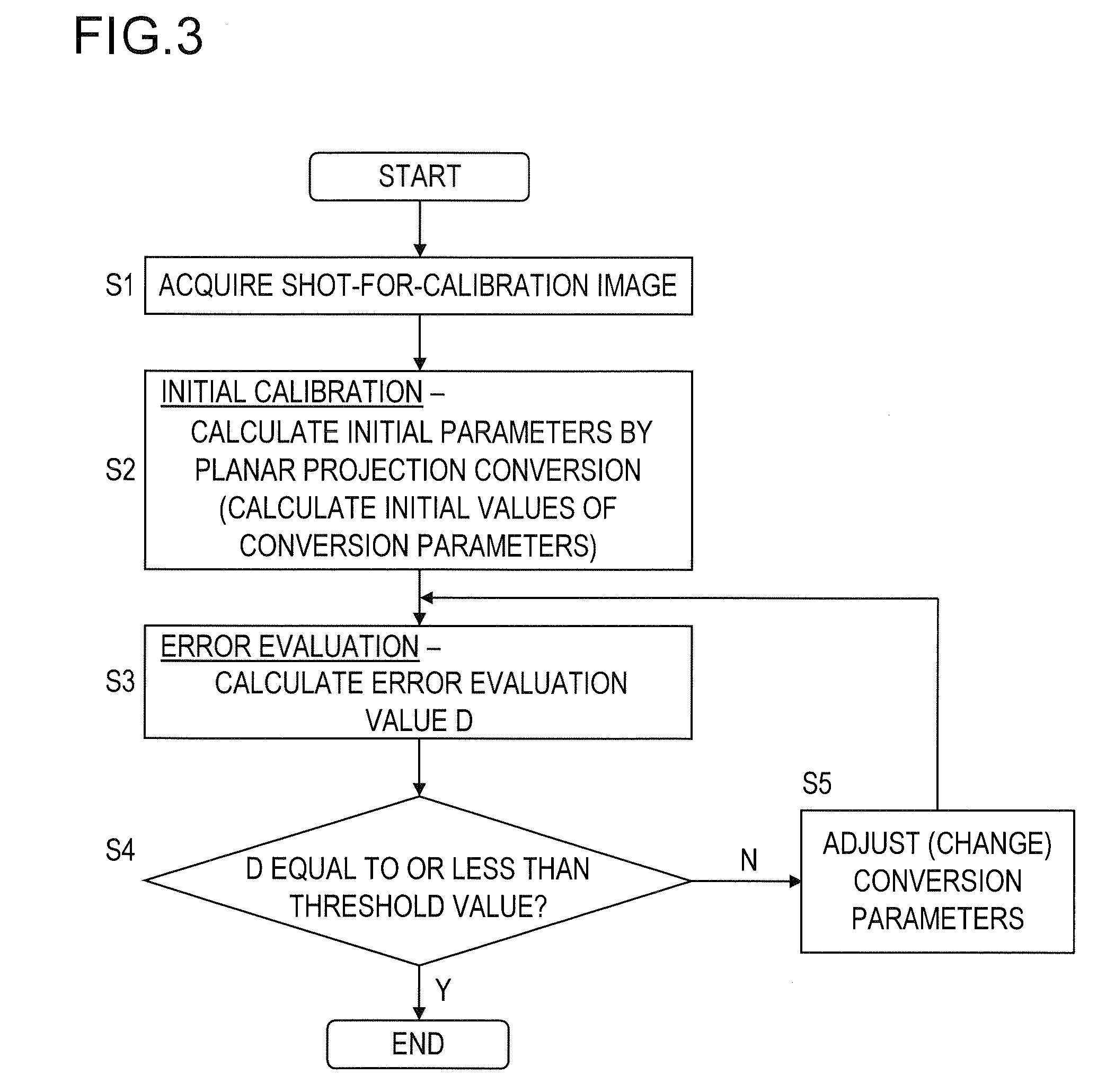Apparatus and method for camera calibration, and vehicle
a technology for cameras and apparatuses, applied in the field of apparatus and methods for camera calibration, and vehicles, can solve the problems of difficult measurement or estimation of accurate conversion parameters, driver will find great difficulty in accurately grasping distances, and errors are inevitabl
- Summary
- Abstract
- Description
- Claims
- Application Information
AI Technical Summary
Problems solved by technology
Method used
Image
Examples
example 1
[0050]First, Example 1 will be described. FIG. 3 is a flow chart showing the procedure of conversion parameter calibration processing in Example 1. The operation in step S1 is executed by the camera 1 (and the image processing apparatus 2); the operations in steps S2 to S5 are executed by the image processing apparatus 2.
[0051]First, in step S1, the calibration patterns A1 to A3 arranged within the shooting area as described above are shot with the camera 1 to obtain a shot image. This shot image is called the “shot-for-calibration image”. In FIG. 4A, reference sign 121 indicates the shot-for-calibration image. In FIGS. 4A to 4C, part of the bumper 101 appears on the images.
[0052]Next, in step S2, initial calibration is performed. In the initial calibration, planar projection conversion is performed by use of any one of the three calibration patterns A1 to A3 included in the shot-for-calibration image to calculate initial parameters, which will be dealt with as the initial values of...
example 2
[0072]Next, Example 2 will be described. FIG. 6 is a flow chart showing the procedure of conversion parameter calibration processing in Example 2. The conversion parameter calibration processing in Example 2 includes operations in steps S1 to S5 and an operation in step S6. The operation in step S6 is executed by the image processing apparatus 2.
[0073]The operations in steps S1 to S5 are the same as in Example 1. Accordingly, no overlapping description of them will be repeated. In Example 2, if, in step S4, the error evaluation value D is equal to or less than the predetermined threshold value, it is judged that the homography matrix H has now been optimized through the repeated calculations in steps S3 to S5, and an advance is made to step S6.
[0074]Installed for the check for safety behind the vehicle 100, the camera 1 is typically so fitted as to shoot behind the vehicle 100 evenly to the right and left with no inclination. Since installation errors are inevitable, however, a shot...
example 3
[0083]Next, Example 3 will be described. FIG. 9 is a flow chart showing the procedure of conversion parameter calibration processing in Example 3. In the conversion parameter calibration processing in Example 3, initial parameters are calculated by perspective projection conversion. The operations after the calculation of the initial parameters are the same as those in Example 1 or 2. In the conversion parameter calibration processing shown in FIG. 9, the operations after the calculation of the initial parameters are the same as those in Example 2; they may instead be the same as those in Example 1 (that is, step S6 may be omitted).
[0084]The conversion parameter calibration processing shown in FIG. 9 includes operations in steps S11 and S12 and operations in steps S3 to S6. The operations in steps S3 to S6 are the same as in Example 2.
[0085]First, in step S11, initial calibration is performed. In the initial calibration, initial parameters are calculated by perspective projection co...
PUM
 Login to View More
Login to View More Abstract
Description
Claims
Application Information
 Login to View More
Login to View More - R&D
- Intellectual Property
- Life Sciences
- Materials
- Tech Scout
- Unparalleled Data Quality
- Higher Quality Content
- 60% Fewer Hallucinations
Browse by: Latest US Patents, China's latest patents, Technical Efficacy Thesaurus, Application Domain, Technology Topic, Popular Technical Reports.
© 2025 PatSnap. All rights reserved.Legal|Privacy policy|Modern Slavery Act Transparency Statement|Sitemap|About US| Contact US: help@patsnap.com



